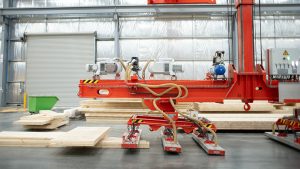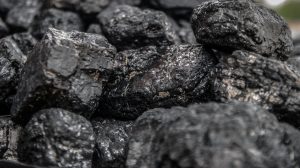Discussion can become passionate concerning construction’s impact on the world’s environment. Buildings are responsible for 40 per cent of all carbons released into the atmosphere. Carbon is one of the most harmful GHGs in terms of rising global temperatures.
Many feel moving away from steel and concrete to mass timber construction (MTC) is the answer to the industry’s carbon emission woes. MTC is seen both as a replacement for steel in upper structures and as a way to reduce the amount of concrete needed in foundations.
However, with no sign of global construction activity slowing over the next 30 years, understanding the full life cycles of steel and concrete is important. And it is particularly incumbent on those who call for the increased use of MTC that they improve their understanding of its GHG implications on the environment.
Global steel demand rose in 2020 by over 100 per cent from 2000, with half going into buildings as structural components, studs, ductwork and rebar. Steel production is said to be responsible for nearly 10 per cent of all CO2 emissions.
However, 99 per cent of steel is recycled, and represents up to 40 per cent of global demand. It would be higher if there was more scrap available. Although the remaining 60 per cent is created from iron ore in traditional blast furnaces, progress is being made to develop carbon-reduced processes for virgin steel.
Concrete production creates about the same amount of global carbon emissions as steel. However, the industry, led by the Global Cement and Concrete Association, has set a goal to halve industry emissions by 2030 and achieve net-zero by 2050.
In the U.S., nearly 40 per cent of concrete from demolitions (140 million tons) is recycled, mostly for use in roads but also in pipe bedding and landscape material.
And then there is mass timber. Could it be the industry’s carbon panacea?
“We want to debunk the myth that mass timber is in any way, shape, or form related to some kind of environmental benefit,” said John Talberth, president of the Center for Sustainable Economy. “That’s simply not true.”
While it’s true that mature trees capture and embed carbon much like the carbon capture processes now being used in concrete, the carbon created over the life of mass timber components is complex and likely under-estimated, Beverly Law of Oregon State University told greenbiz.com.
Wood’s carbon-embedding benefits end the moment forestry trucks leave the garage. In fact, the carbon-embedding process reverses. Trucks burn gas or diesel, chainsaws use gas. Trees are cut down, terminating their carbon collection. But only the prime lower sections are harvested. Upper portions and branches are either burned, turning them into carbon, or left to decay on roadsides. Replacement trees can take a decade or more before they collect carbon again.
Harvested logs are either taken to a local sawmill or sawn onsite. The processed pieces must be transported to a plant that can turn them into mass timber components. Those are then transported to jobsites perhaps thousands of miles away. Carbon is emitted throughout.
Notions of Canada’s “forestry management” is also open to green washing. Unlike Sweden, where almost all parts of harvested trees are collected and used, not so in British Columbia’s interior, says Chief Patrick Michel of the Kanaka Bar community.
“In central B.C., they’re taking the bottom 40 per cent and burning the rest to get that one money tree,” he told the Daily Commercial News. Chief Patrick’s observations are confirmed in a study authored by Ben Parfitt.
As for the recycling of wood waste from buildings and elsewhere, the record is not as good as steel or even concrete. Two-thirds of wood waste is left in landfills, slowly releasing its carbon. Another 15 per cent is turned back into carbon when burned as fuel, according to the U.S. EPA.
As for the repurposing potential of today’s mass timber elements when their original use ends years from now, much is left to conjecture.
John Bleasby is a Coldwater, Ont.-based freelance writer. Send comments and Inside Innovation column ideas to editor@dailycommercialnews.com











Recent Comments
comments for this post are closed